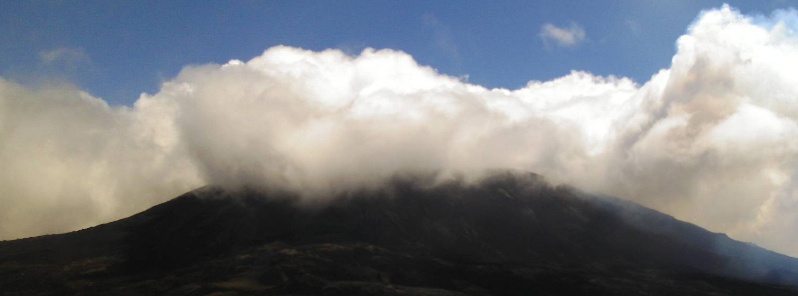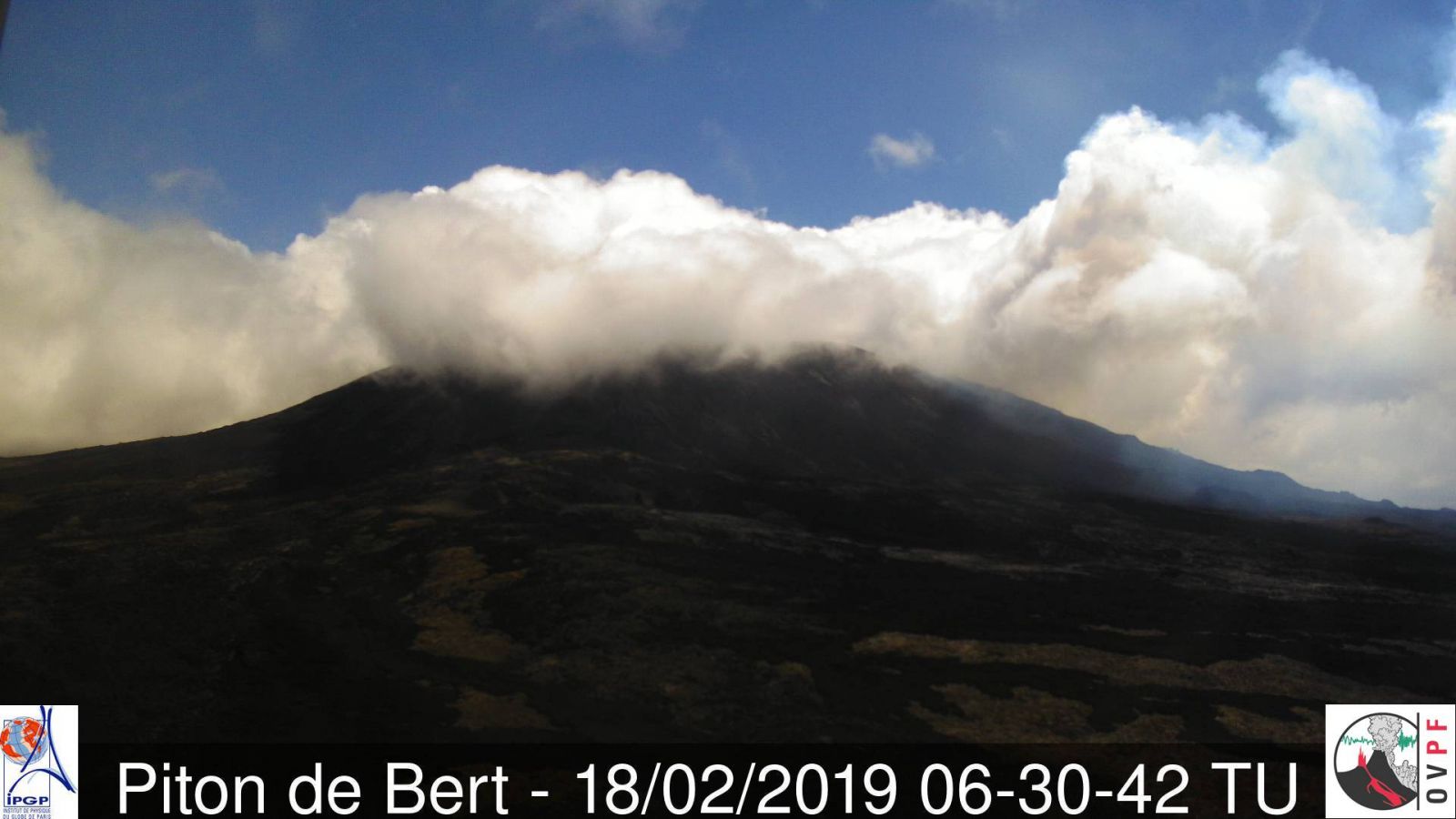Eruption starts at Piton de la Fournaise, Reunion

A new eruptive phase started at Reunion's Piton de la Fournaise volcano at 05:48 UTC on February 18, 2019 (09:48 local time) following two days of intense seismic activity.
According to the information provided by the OVPF, the eruption seems to be taking place at high-altitude fissures on the NNE flank of Dolomieu crater in the central part of the Enclos.
Unfortunately, it had not yet been possible to accurately determine the number of eruption fissures and their precise locations due to significant fog covering the site.
OVPF said instruments installed at the volcano measured rapid inflation (swelling) of the volcano and increased emission of CO2.
Depuis une 10aine de jours, une inflation de l’édifice du Piton de la Fournaise, synonyme d’une pressurisation du réservoir magmatique superficiel, est de nouveau observée par le réseau de l’OVPF. Les flux de CO2 sont également en hausse. Plus d'infos ici https://t.co/tMpN3TASMq pic.twitter.com/Am2miSZLfK
— Observatoire Volcanologique Piton de la Fournaise (@ObsFournaise) February 13, 2019

Authorities implemented the alert phase 2-2 at 10:15 local time, prohibiting public access to the l'Enclos Fouqué caldera until further notice.


Geological summary
The massive Piton de la Fournaise basaltic shield volcano on the French island of Réunion in the western Indian Ocean is one of the world's most active volcanoes. Much of its more than 530 000-year history overlapped with eruptions of the deeply dissected Piton des Neiges shield volcano to the NW.
Three calderas formed at about 250 000, 65 000, and less than 5 000 years ago by progressive eastward slumping of the volcano. Numerous pyroclastic cones dot the floor of the calderas and their outer flanks.
Most historical eruptions have originated from the summit and flanks of Dolomieu, a 400-m-high (1 312 feet) lava shield that has grown within the youngest caldera, which is 8 km (26 247 feet) wide and breached to below sea level on the eastern side.
More than 150 eruptions, most of which have produced fluid basaltic lava flows, have occurred since the 17th century. Only six eruptions, in 1708, 1774, 1776, 1800, 1977, and 1986, have originated from fissures on the outer flanks of the caldera. The Piton de la Fournaise Volcano Observatory, one of several operated by the Institut de Physique du Globe de Paris (IPGP), monitors this very active volcano. (GVP)
Featured image credit: OVPF

Commenting rules and guidelines
We value the thoughts and opinions of our readers and welcome healthy discussions on our website. In order to maintain a respectful and positive community, we ask that all commenters follow these rules.